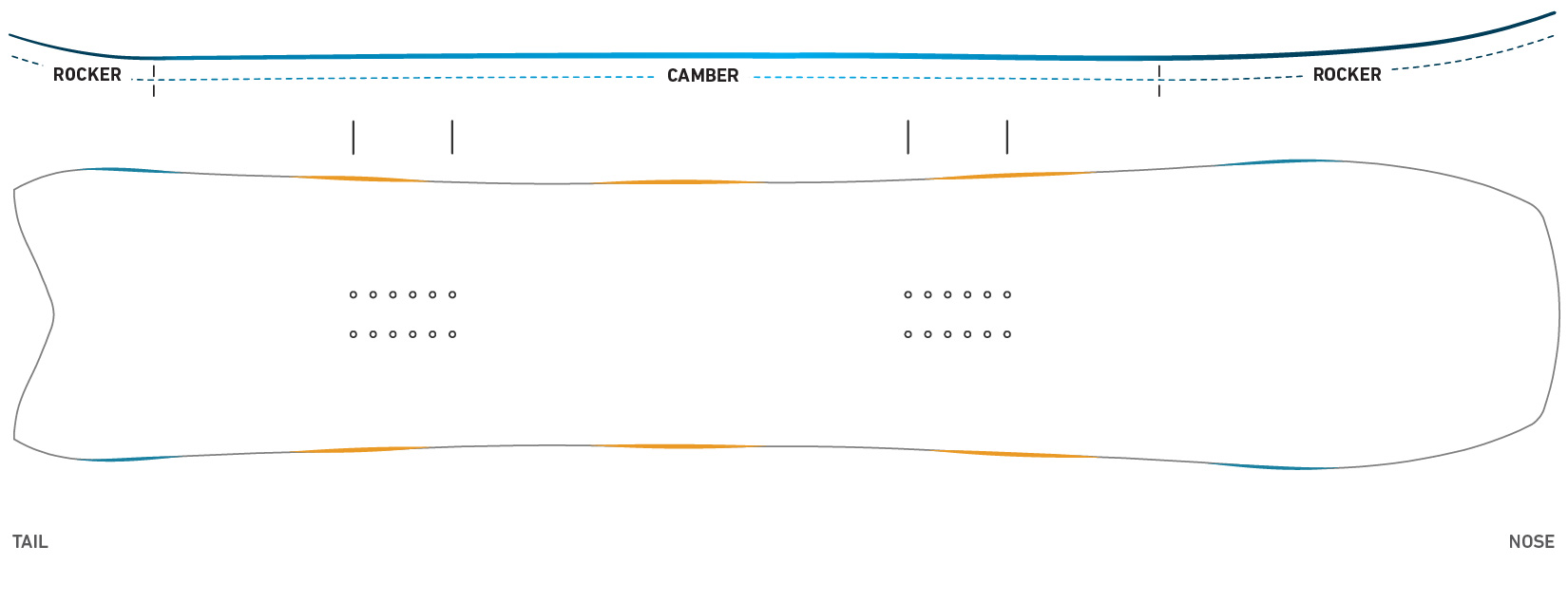HOVERCRAFT 2.0
- Venditore
- Jones
- Prezzo di listino
- €519,96
- Prezzo scontato
- €519,96
- Prezzo di listino
-
€649,95 - Prezzo unitario
- /per
Inserimento del prodotto nel carrello
The evolved all-conditions charger
Ideal for pow slashing, crud busting and slaloming trees
The Hovercraft 2.0 is an explosive alternative freeride board with a tapered directional shape that offers surprisingly diverse performance. With a floaty nose, camber underfoot and a long sidecut, the Hovercraft charges through pow, crust or corn, and rails on piste. The Hovercraft also features Re-Up Tech and is built with recycled materials from old snowboards.
Key Benefits
- Medium flex for friendly control
- Tapered directional shape for nimble float
- Directional rocker profile for float + grip
- Long sidecut for stability at speed
- Made with Re-Up tech. Stringers are recycled materials from old snowboards.
- 3D Contour Base for ultra fast glide and fluid turn intiation
Terrain
On-Piste / All Mountain7/10
Freeride / Powder10/10
Freestyle / Park5/10
Sustainably sourced woodcores
All Jones woodcores are made with sustainably sourced wood. Every piece of wood we use in every board comes from a responsibly managed forest.
Wend Bio Wax
Jones boards are ready to shred straight out of the shop and are factory waxed with Wend natural wax, a plant blend and biodegradable wax that is also non-toxic.
100% recycled ABS
Since 2014, all of our snowboards and splitboards have been built with recycled ABS sidewalls. We've used 847 miles of sidewalls since switching to recycled ABS.
Bio Resin
Bio Resin is a bio-based epoxy made with 27% plant-based carbon instead of petroleum-based carbon. The organic raw materials used to make bio-resin are co-products or waste products of plant-based industrial processes.
Built with 100% solar power
As of May 2020, all Jones snowboards and splitboards are made with 100% solar power. Switching our snowboard and splitboard production to 100% solar made a 89% reduction in CO2 compared to non-solar powered production.
Proud member of 1% For The Planet
Your purchase supports grassroots organizations. We donate 1% of every sale to environmental causes though o
3D Contour Base 3.0
Freeride focused 3D-base contours featuring an even balance of 12mm of spoon bevel in the nose and 3D speed channels in the tail. Spoon bevel starts at the rocker point.


1. Traction Tech 1.0
Like a serrated knife slicing into the snow, Traction Tech improves your edge grip by adding multiple contact points along the running length of your board.
Traction Tech is a critical feature for rockered boards. Rocker improves glide in mixed conditions, but the decreased edge contact makes it harder to really lock into your turns and hold a solid edge. Traction Tech is crucial to offset the edge drift of rocker. - Jeremy Jones
2. Progressive sidecut
At the far ends of the sidecut, the radius is incrementally increased as the edge reaches the contact point. Gradually increasing the sidecut radius towards the contact point delivers smoother turn initiation and exit as the edge tracks in and out of the snow with a less abrupt transition.
Blunt nose
How a board glides in powder, crust, corn or any snow more than an inch deep, is dictated by it’s front contact point and just past it. Next time you are in soft snow watch how much snow comes over the corner of the nose near the contact point. The billowing snow coming out from behind the tip means you are plowing through it which is obviously slowing you down. By adding a blunt nose you get the float benefits of a much longer nose without the ‘snow plow’ rounded tip and it’s extra swing weight. - Jeremy Jones
Directional flex pattern
Off set tip-to-tail flex pattern that is designed for directional freeride boards. The nose, center of board and tail are slightly different stiffnesses to help lift the nose, sink the tail and improve stability at speed.
Directional Rocker
A hybrid rocker/camber flex pattern defined by more tip rocker than tail rocker and camber between the bindings. The rockered tip floats the board’s nose and improves maneuverability while the camber underfoot provides edge hold and response. A slightly rockered tail maintains the power and stability of a traditional board but helps keep the tail catch-free initiating turns and landing switch.
"My experience is that most falls in freeriding start from the nose of the board – you either go over the bars in powder, the nose gets caught under a weird crust and tosses you, or you hit a hard tranny at the contact point of the tip and get bucked. Directional Rocker eliminates most of these falls." - Jeremy Jones







